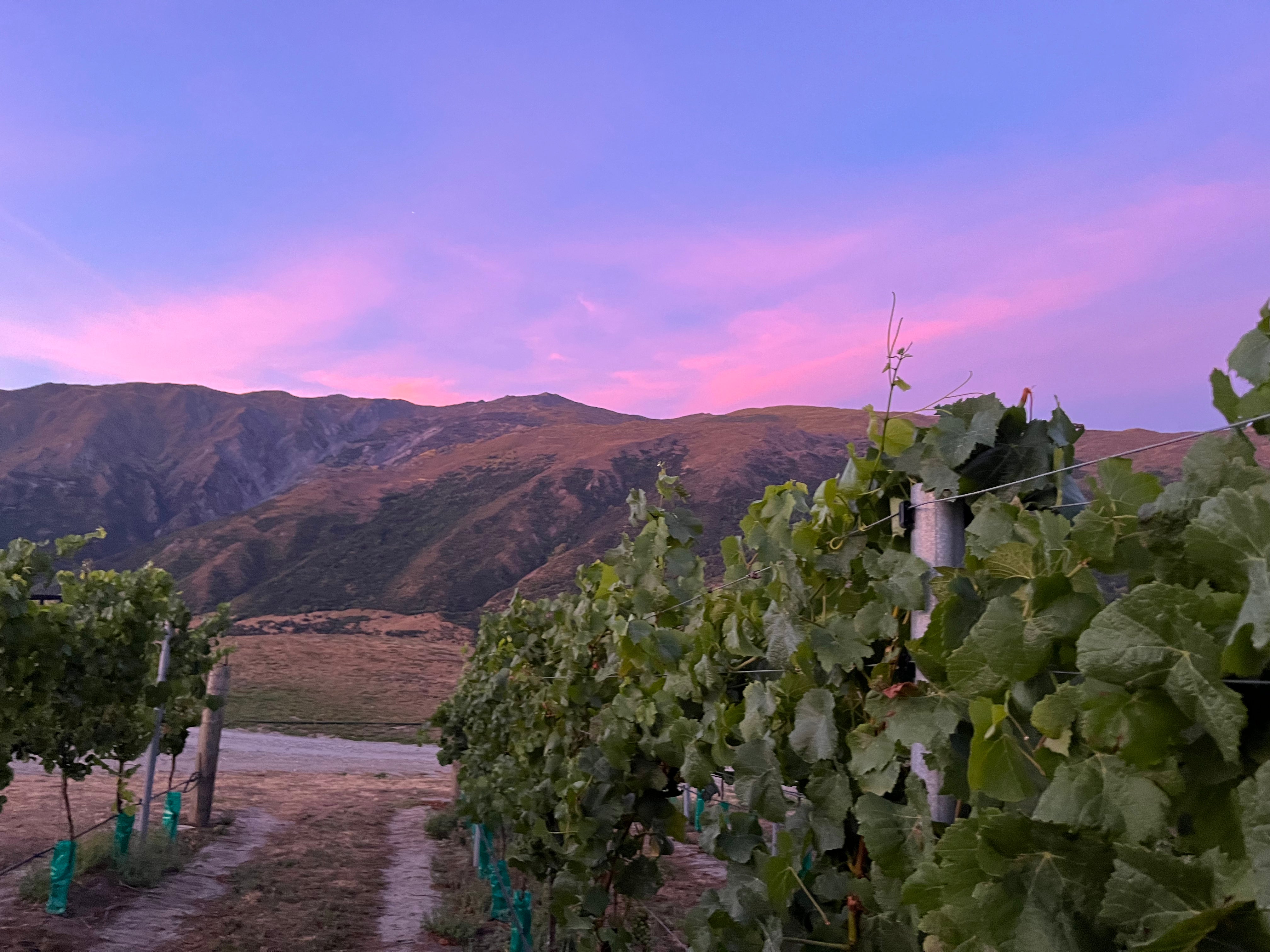
Summer 2025 in the Kinross Home Vineyard
Preparing for an Exceptional Vintage in 2025
By Gary Crabbe- Kinross Viticulturist
As summer reaches its peak in Central Otago, our vineyards at Kinross are carefully managed to ensure the best possible fruit quality for the upcoming vintage. This period, known as veraison, is a crucial time in the growing season when our grapes begin to change colour and develop the rich flavours that define our wines. Every step we take now has a direct impact on the intensity, balance, and structure of the final product.
Managing Sun Exposure for Healthy Grapes
One of the key vineyard management techniques we employ during this hot, hot summer is strategic leaf removal. The back side of the vines is kept covered with a natural canopy of leaves to shield the fruit from the harsh afternoon sun, preventing sunburn that could damage the delicate grapes.
On the morning side of the vines, however, we remove the leaves to allow gentle sunlight to reach the fruit early in the day. This ensures proper ripening without excessive heat stress, helping the grapes maintain the acidity levels necessary for a well-balanced wine.
Preparing for Bird Protection: Netting the Vines
With veraison underway and the fruit transitioning from green to deep purple, we are fast approaching another critical step—netting the vines. As soon as the grapes start to sweeten, hungry birds become a major threat. Covering the vines with protective nets prevents them from feasting on our carefully nurtured crop, ensuring that we have a full, healthy harvest.
Selective Bunch Thinning for Quality Control
At this stage, our experienced vineyard team carefully inspects the vines, selectively removing any fruit that does not meet our high standards. This process involves cutting away the tails or shoulders of the grape clusters—sections that might not ripen evenly or contribute to the overall quality of the final wine.
This year, our bunches are quite small due to a prolonged drought, resulting in smaller berries with more concentrated flavours. The combination of minimal rainfall and controlled irrigation means we can expect an intensely flavored, deeply colored Pinot Noir. Less juice, more skin contact—leading to a wine of exceptional richness and structure.
The Influence of Soil on Ripening
At Kinross, our vineyard blocks ripen at different rates due to variations in soil composition. Some sections, particularly those with light, schist-based soils, ripen faster than others with heavier, moisture-retaining soils.
For example, certain Pinot Noir blocks ripen a full 12 days earlier than others, making careful monitoring essential to determining the perfect harvest time. Meanwhile, further down the vineyard, our Chardonnay vines continue their slower, steady ripening process, influenced by the unique characteristics of their soil and location.
Looking Ahead to Harvest
Our vines are reaching peak ripeness over the next 6 weeks, and we anticipate an exciting harvest in early April. We will be picking Gibbston Before Bannockburn this year, which is not very common. The combination of warm weather, drought conditions, and precise vineyard management is setting the stage for a vintage that will produce deep, intense wines from Gibbston this year.
As we approach this final stretch before picking, our team remains focused on the details that will make all the difference in the bottle. Stay tuned for more updates from the vineyard as we move closer to harvest and Harvest celebration at Kinross!







